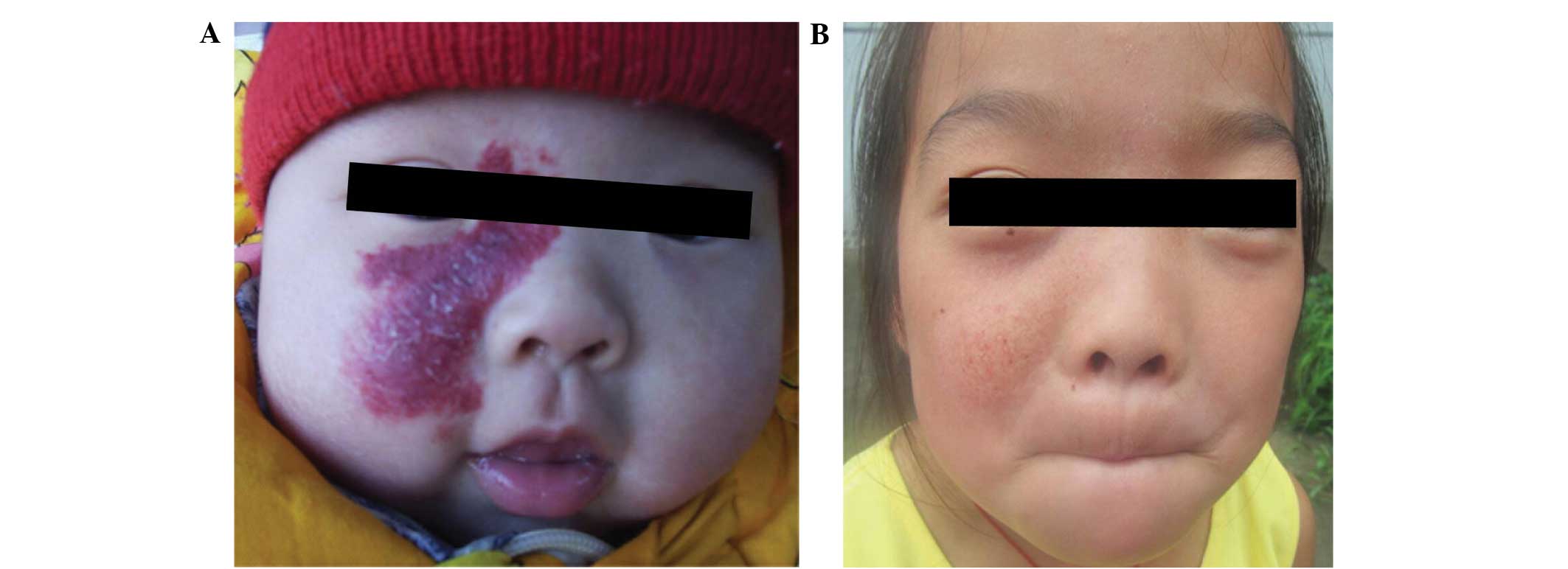Efficacy of low‑dose 90Sr‑90Y therapy combined with topical application of 0.5% timolol maleate solution for the treatment of superficial infantile hemangiomas
- Authors:
- Published online on: July 1, 2015 https://doi.org/10.3892/etm.2015.2609
- Pages: 1013-1018
Metrics:
Total
Views: 0 (Spandidos Publications: | PMC Statistics:
)
Total PDF Downloads: 0 (Spandidos Publications: | PMC Statistics:
)
Abstract
The aim of the present study was to investigate the clinical efficacy and safety of low‑dose 90Sr‑90Y therapy combined with the topical application of 0.5% timolol maleate solution for the treatment of superficial infantile hemangiomas (IHs). A total of 72 infants with hemangiomas were allocated at random into the observation group (17 cases aged ≤3 months, 20 cases aged >3 months) or the control group (15 cases aged ≤3 months, 20 cases aged >3 months). The observation group was treated with low‑dose 90Sr‑90Y combined with timolol, while the control group received an identical dose of 90Sr‑90Y with physiological saline. Data were collected for statistical analysis, and treatment efficacy was compared between the two groups. In the observation group, 100% (37/37) of subjects exhibited an ‘excellent’ response to the treatment, while 94.1% (16/17) of patients aged ≤3 months and 85.0% (17/20) aged >3 months were classed as being cured. In the control group, the treatment was classed as ‘effective’ in 100% (35/35) of the subjects, while the excellent response rate was 86.7% (13/15) among the infants aged ≤3 months and 75.0% (15/20) among the infants aged >3 months. The ‘cure’ rates in the control group were 66.7% (10/15) and 60.0% (12/20) for the ≤3‑month‑ and >3‑month‑old subjects, respectively. The excellent response and cure rates were notably higher in the observation group than those in the control group. Comparison between the two groups revealed a χ2 value of 13.90 (P<0.01) for excellent responses in subjects aged ≤3 months, while for patients aged >3 months the χ2 value was 28.57 (P<0.01). Analysis of the cure responses gave similar results [≤3 months, χ2=23.22 (P<0.01); >3 months, χ2=15.67 (P<0.01)]. At 3‑4 months after the first course of treatment, the cure rate was 33.3% (11/33) in the observation group, which was significantly higher than the rate of 18.32% (4/22) in the control group (χ2=5.92, P<0.05). No serious adverse reactions were observed in either group. In summary, low‑dose 90Sr‑90Y therapy combined with the topical application of 0.5% timolol maleate induces a rapid response in superficial IH, with excellent efficacy and no obvious adverse reactions, and may represent a clinically applicable intervention.














